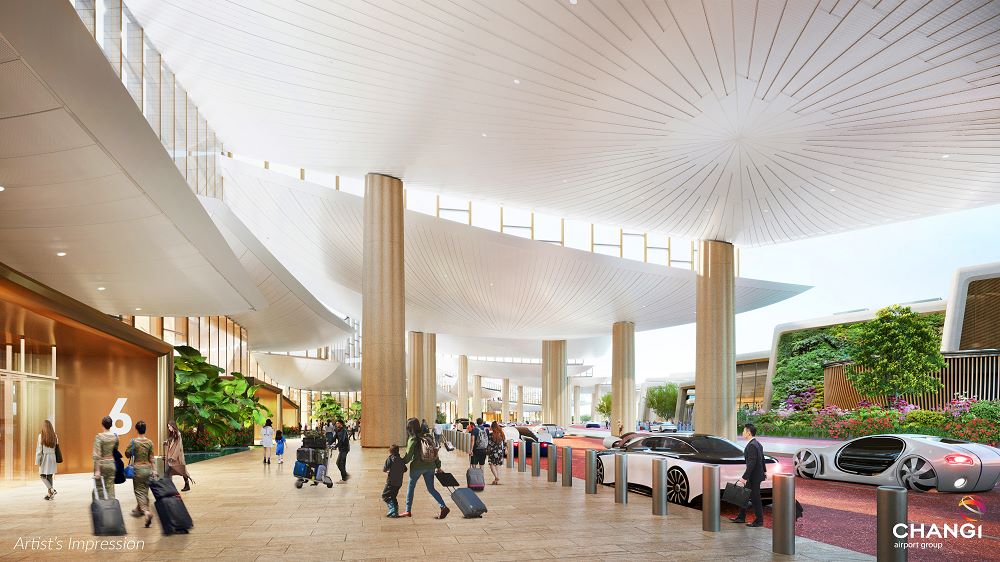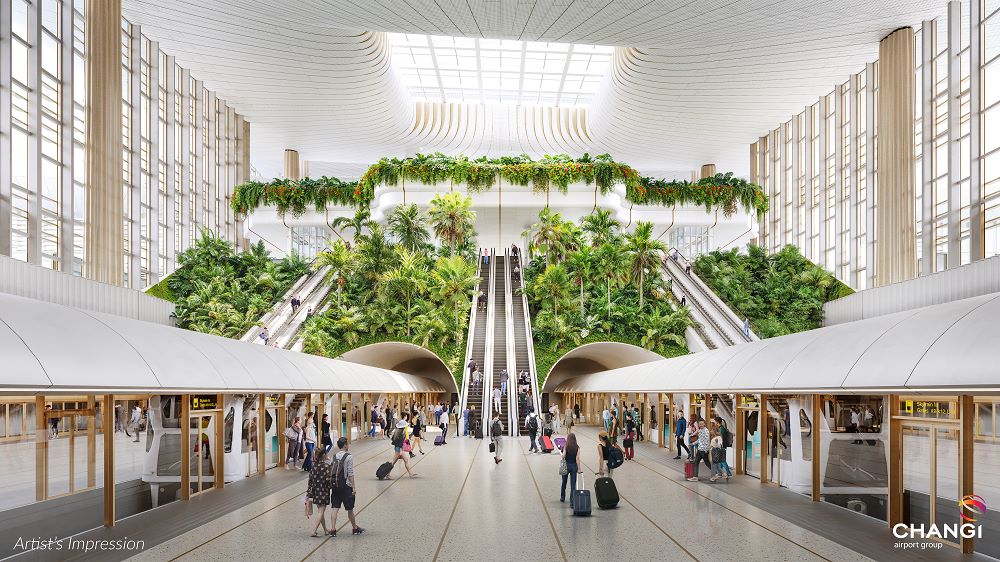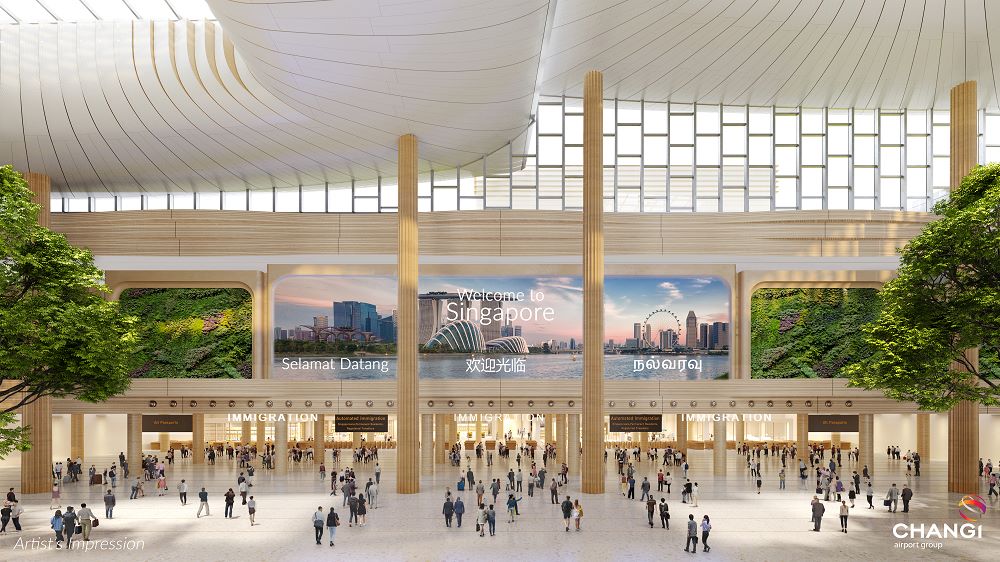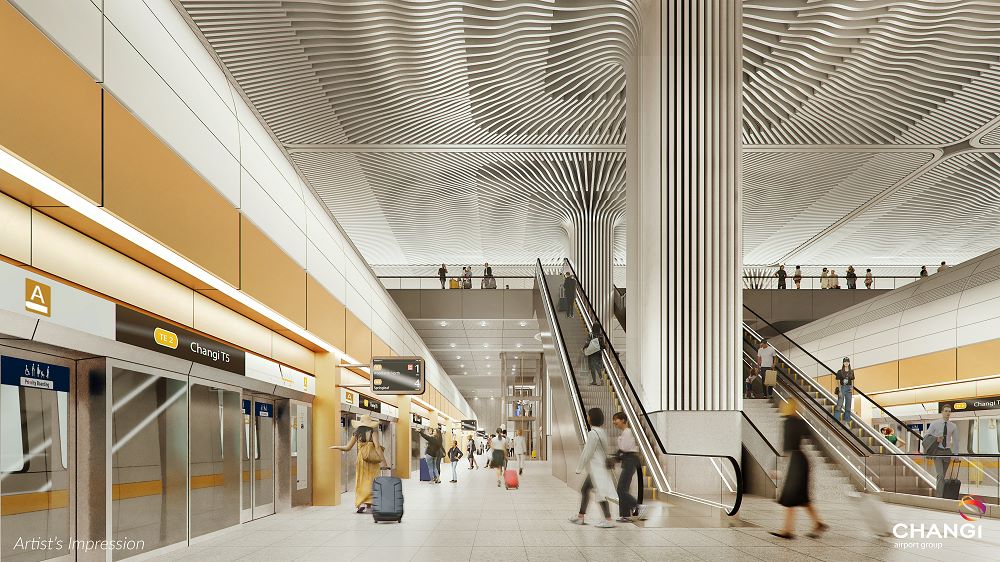We first heard in detail about Changi Airport’s Terminal 5 (T5) during Singapore’s National Day Rally in 2022. Fast forward to 2025, and that vision is breaking ground. More than just another terminal, T5 is a symbol of Singapore’s future success. Aviation has long been a cornerstone of Singapore’s economy. Not only does it support tourism and trade, it also contributes to a wide spectrum of industries, creating jobs, and bringing the world closer to our shores.
Now, construction is officially beginning on what will be one of the most complex infrastructure projects in Singapore’s history. Spanning 1,080 hectares worth of land, almost the size of Changi Airport today, T5 is, in many ways, building an entirely new airport. Scheduled for completion in the mid-2030s, T5 is being developed to meet the expected growth in air travel and cargo over the coming decades, and reflects Singapore’s commitment to strengthening its position as a leading air hub.
Designing for the future: Mega yet cosy
Though it is a mega development, T5 has been thoughtfully designed to exude the cosy and welcoming feel that Changi Airport is known for. This is the key guiding principle of the design team, which is made up of both local and international architects and planners. At its core, Terminal 5 is as much about people as it is about aviation.
To make the terminal feel cosy, the roof is designed to feature a collection of smaller, overlapping roofs with varying heights. The ‘roof leaves’, as they are called, allow the mega building to be broken into different spaces for a more human-scale experience. For example, in spaces such as resting areas and shopping streets, the roof leaves are smaller and lower to create a cosier and more relaxed atmosphere. At places where many passengers gather, such as the immigration halls, the roof leaves are lifted higher. Combined with natural light filtering through the rooftop leaves and landscaping at appropriate spaces, the terminal uplifts the mood for passengers.

Seamless mobility is also at the heart of the T5 experience, designed to make travel easier for everyone. Whether you are managing luggage, travelling with young children, or simply moving at a leisurely pace. Within the terminal itself, an intra-terminal automated people mover (APM) system ensures convenience, taking arriving passengers directly from the disembarkation gates to the Arrival Immigration Hall, reducing walking distance.


Integrated connectivity: Linking seamlessly with the city and beyond
T5 will connect to Changi’s existing terminals via airside and landside links, so that the airport can operate as a single integrated hub. But the connection goes well beyond the airport grounds.

T5 will be well-connected to the rest of Singapore, with a dedicated ground transportation centre where passengers can access rail, bus and other point-to-point transport services. Two MRT lines, the Cross Island Line and Thomson-East Coast Line will serve the terminal directly, linking it to the city and major transport nodes. These transport enhancements are guided by one principle: user experience. Whether arriving from town or transferring between terminals, the journey will be, intuitive and seamless.
Sustainability, innovation and caring for workers
T5 is designed to be a forward-thinking space where sustainability, innovation, and care for people go hand in hand, both for the environment and for the workforce.
Built to meet the challenges of climate change, the airfield is designed with an elevation of 5.5m above sea level to withstand extreme weather and climate change effects. Aircraft taxiways are sloped to allow rainwater to drain off. The terminal will also feature energy-efficient systems aimed at lowering the airport’s carbon footprint. . This includes the installation of solar panels on the entire rooftop of T5, making it potentially the largest rooftop solar facility in Singapore. The combined energy generated daily is sufficient to power 20,000 4-room HDB flats for a year.
With an ageing population and the potential challenges posed by a shrinking workforce, T5 will leverage technology to ease the load on staff and create a more efficient airport experience. Automated systems will help reduce manual tasks, like the state-of-the-art baggage handling system that can continue operating even under rainy weather, ensuring fewer delays to baggage claim by passengers.
From the get-go, T5 was envisioned not just as a transit point, but as a lifestyle destination. Locals may find themselves dropping by not for a flight, but to grab a meal, meet a friend, or simply enjoy the space. Above the ground transportation centre, there will be a new space for families, friends, and the airport community to gather and bond. It will feature an exciting attraction and leisure destination for everyone to enjoy.
The opening of T5 marks the beginning of new things. It will not be the conclusion, but the start of endless possibilities. Breaking ground is just the first step of a new terminal and a new era for Changi Airport.




